Our Japanese craftsmenOur craftsmen are present throughout Japan, offering a rich know-how. 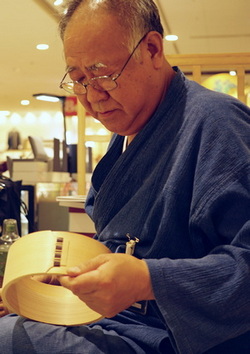 Craftsman of Magewappa - Shunji KURIMORIMaster Shunji Kurimori is the sixth generation to perpetuate the Magewappa technique. The principle is based on the bending of thin blades of cedar or Japanese cypress on a cylindrical support, to form cups, bowls or bento boxes.
Magewappa is a traditional specialty of the northern region of Honshu Island. Master KURIMORI started this craft when he was only 18 years old. His experience and deep respect for this art explains the perfection of his works, with a perfect finish and unique design. 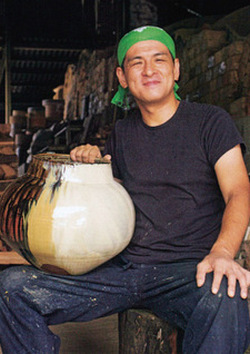 Craftsman of pottery - Hekizan ONIMARUMaster Hekizan ONIMARU's atelier is located in southern Japan. Takatori pottery appeared in 1630 under the impetus of the famous architect and tea ceremony master of the Edo period, Kobori Enshū. Takatoriest pottery characterized by thin ceramics, which gives it its elegance, and influenced by the idea of beauty as expressed by Enshû according to the principle of kirei-sabi, which refers to simplicity, beauty, and the natural aging brought about by the work of time.
Hekizan ONIMARU is the third generation of Takatori style potters. His work, Fragrant Cup, is typical of the Takatori style, its enveloping forms highlighting the fragrance of tea, coffee, and liquors. 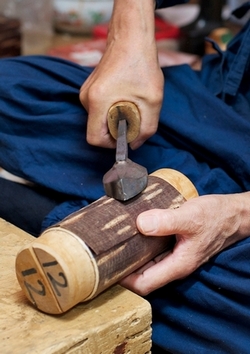 Craftsman of cherry bark - Maison DENSHIRODenshiro has been working with cherry bark since 1851. Throughout its long history, since its founding 170 years ago, the philosophy of these craftsmen has been respectfully preserved and passed down from generation to generation.
Long ago, the mountain cherry tree had the same name as the birch tree: Kaba. That is why cherry bark work is called Kabazaiku, or "birch work". Our craftsmen use the most natural materials and always strive to let the wood express itself in their work. Our Kabazaiku series is not only functional but also elegant, to decorate your table. 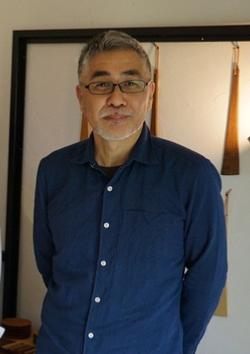 Designer and craftsman of wood - Tatsuya KAMINOMaster Tatsuya KAMINO's atelier is located in southern Japan, a region rich in natural hot springs. He founded his woodworking workshop where he makes furniture, cutlery, tableware, and small objects and toys for children using only the most natural materials. All his works are hand carved and delicately crafted.
The warmth and expression of each wood species, the delicacy and beauty of the curves, and the thoughtful ease of use form a harmonious and unique whole. It takes a lot of experience to make such refined objects. Master Kamino's objects show great sensitivity combined with a slightly modern design. 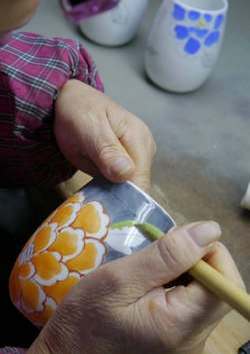 Taizan, since 1912Taizan, located in a small mountain town rich in nature, has been making ceramics since 1912. Taizan's items are made one by one by hand, producing unique objects. While preserving the traditional techniques of Arita-yaki porcelain, the colors, patterns and shapes have evolved to suit modern lifestyles.
Kaolin is fired at high temperatures to produce a pure white porcelain that is strong and durable, on which the artisans paint beautiful designs that appeal to connoisseurs. 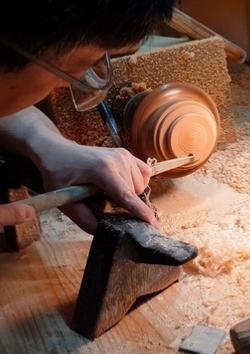 Craftsman of wood - Maison Gatomikio ShotenGatomikiio Shoten was founded in 1908 in the Ishikawa region as a carpentry factory. This area has played a major role in lacquerware and woodworking production for 450 years.
It is the "wiped" lacquer technique that has been used in the production of most of our lacquered items. This technique consists of applying a layer of lacquer and then wiping it off to leave only a very thin layer. After drying, a new layer of lacquer is applied in the same way. This process is repeated several times until finished. This technique respects the grain of the wood that has been carved by the craftsmen. Today, Gatomikio Shoten offers modern works of art, adapted to today's lifestyles. 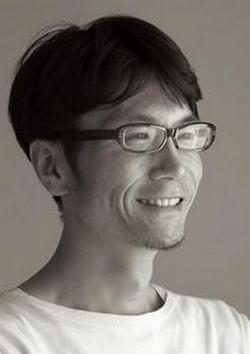 Designer and craftsman of wood - Tomotaka NAGAOIn his work, Mr. Tomotaka NAGAO is greatly inspired by his four children. As a designer, he is also the head of his workshop. He makes functional works in cheerfulness (tanoshii), and he tries to convey this feeling in his works, made of safe and healthy materials, to bring happiness to our daily life. His concept of "living with fun" is reflected in his creations.
His concept of "living with fun" is reflected in his creations, such as the mushroom-shaped bowl/cup/spoon set for children, or the folding and decorative table rest, which are both pleasing to the eye and fun for young and old alike. Craftsman of wood and bamboo - Nobuo KAIMaster KAI runs his atelier of the same name in Oita Prefecture. He specializes in making cutlery out of bamboo, Mousou bamboo from his region, as well as large birch wood from Shimane prefecture. The drying of bamboo is an important and delicate step, which depends on the weather and the season, and requires a lot of skill in order to avoid fractures that can occur during hot weather, or mold that can spread during the rainy season.
The materials and design of KAI masterpieces are in perfect harmony with contemporary uses. 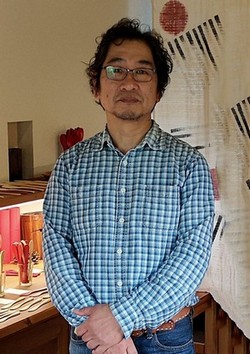 Craftsman of traditional candles - Maison Omori WarousokuIn his family, Master Tarou Omori represents the sixth generation of craftsmen specializing in the making of traditional Japanese candles. His workshop is located in Ehime Prefecture on Shikuko Island.
Since the end of the Edo period, this region has prospered from the production of Japanese paper (Washi) and from the production of Japanese natural wax (Warou) extracted from the tallow tree. The techniques used in Master Oumori's workshop are inherited from this period, and the family continues to preserve the secrets of making these unique traditional candles, handmade one by one with great care. The manufacturing process is a testament to the craftsmen's skill and intuition, developed and refined over many years. 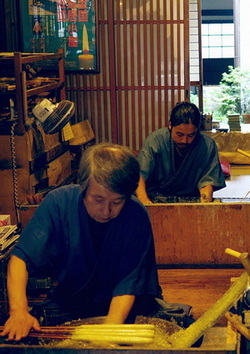 Craftsman of porcelain - Maison TakahamayakiThe UEDA family opened its first ceramic kiln in Takahama, Kumamoto Province, in the 18th century. It is also since this date that the family manages the kaolin quarry located in the Amakusa area of Kumamoto, which produces a unique kaolin in the world, according to the Japanese pharmacologist and geologist Gennai HIRAGA of the Edo period. This kaolin is used to make translucent and very hard ceramic pieces (yakimono). Even today, it is recognized as the best in Japan. ARITA's and SETO's high-end ceramics are made with this kaolin. In our collection, you will find two ranges: the first one, decorated with a reproduction of a seaweed motif, dates from the Edo period; the second one is more contemporary.  Craftsman of isothermal bottle - Shouchi TANIGUCHIShouchi Taniguchi inherited his father's know-how and passed it on to his two sons who now work with him in their workshop in Ishikawa, a region of Japan where the art of woodworking and lacquering is very present. They are looking for ergonomics and the best design for the users of their products.
Their insulated bottle presents a beautiful contrast of inspiration, combining the warmth of tradition, brought by the wooden cap, and the coolness of modernity, reflected in the shiny surface of the stainless steel. This echoes the role of this bottle to keep hot or cold drinks at their ideal temperature.  Craftsman of bamboo - Maison Kuriyama ShotenMr. Kuriyama is the fourth generation to work with bamboo. He lives in Nishikawa Nobori in Saga City. In Nishikawa Nobori, bamboo working first appeared as a secondary activity of farmers in the Meiji period. From the beginning of the 20th century until the end of the war, more than 500 craftsmen settled in this area and made it one of the biggest bamboo working centers. Today, there are only three businesses in this area that still carry on this legacy, including Mr. Kuriyama's store. Mr. and Mrs. Kuriyama work together in their store to keep this tradition alive. Mr. Kuriyama also has ambitions to invent new bamboo products. He wants to be, like his father before him, a craftsman who can produce anything that is asked of him. 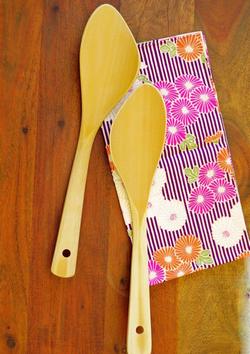 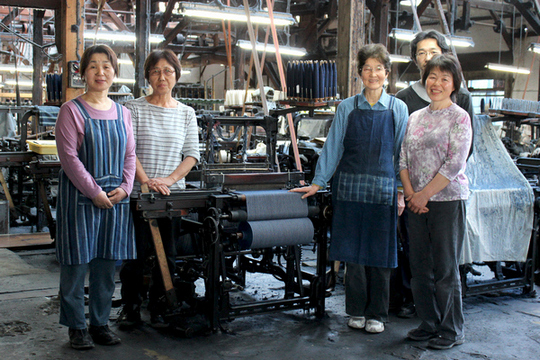 Craftsmen of dyeing and weaving - Matsusaka cotonMatsusakamomen was established in 1874. The founder, Mr. Tsunekichi Nishiguchi, established a konya (dyeing store) and started weaving afterwards. Thus was born the Matsusaka cotton production system. Today, Mr. Yuya Nishiguchi, the fifth generation, is the only weaver of Matsusaka cotton, which is so popular in the region. The traditional Matsusaka stripe patterns were very popular in Edo (now Tokyo).
The simplicity of the patterns and the color of indigo (Japan blue) gives a timeless beauty to these fabrics.  Craftsmen of Japanese Tenugui - NijiyuraNijiyura is a brand of Tenugui, traditional Japanese towels, made by a dyeing workshop in Osaka, which has been perpetuating this craft for decades.
While using their know-how and mastery of the traditional technique, the craftsmen adapt their products to our current lifestyle. |




